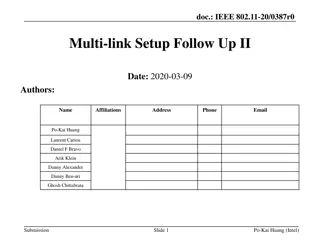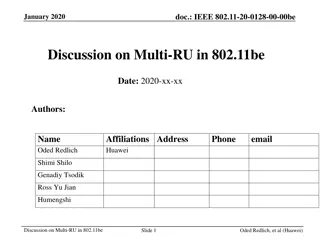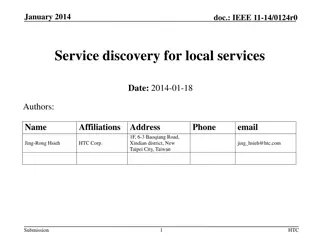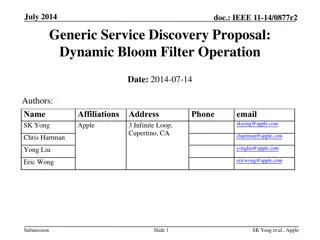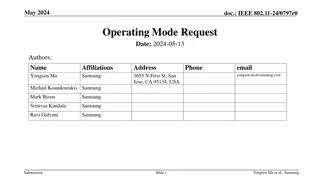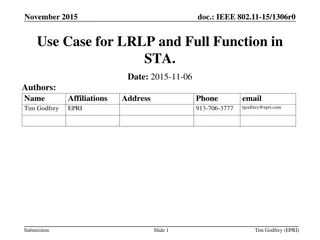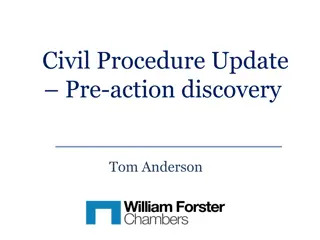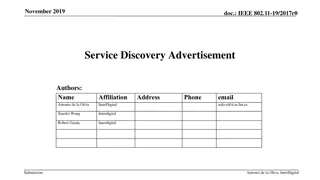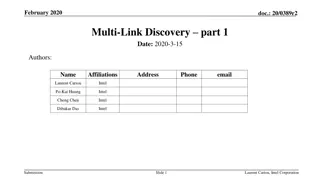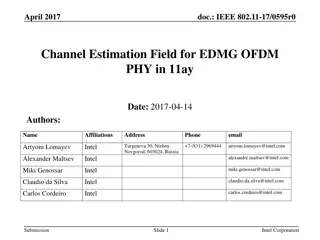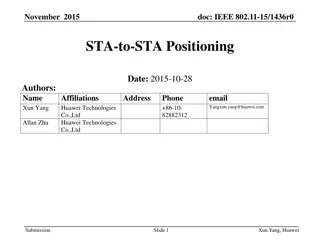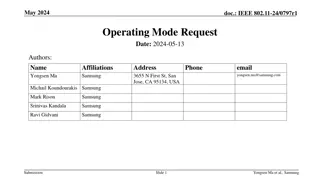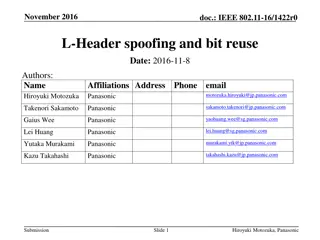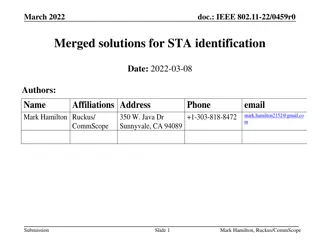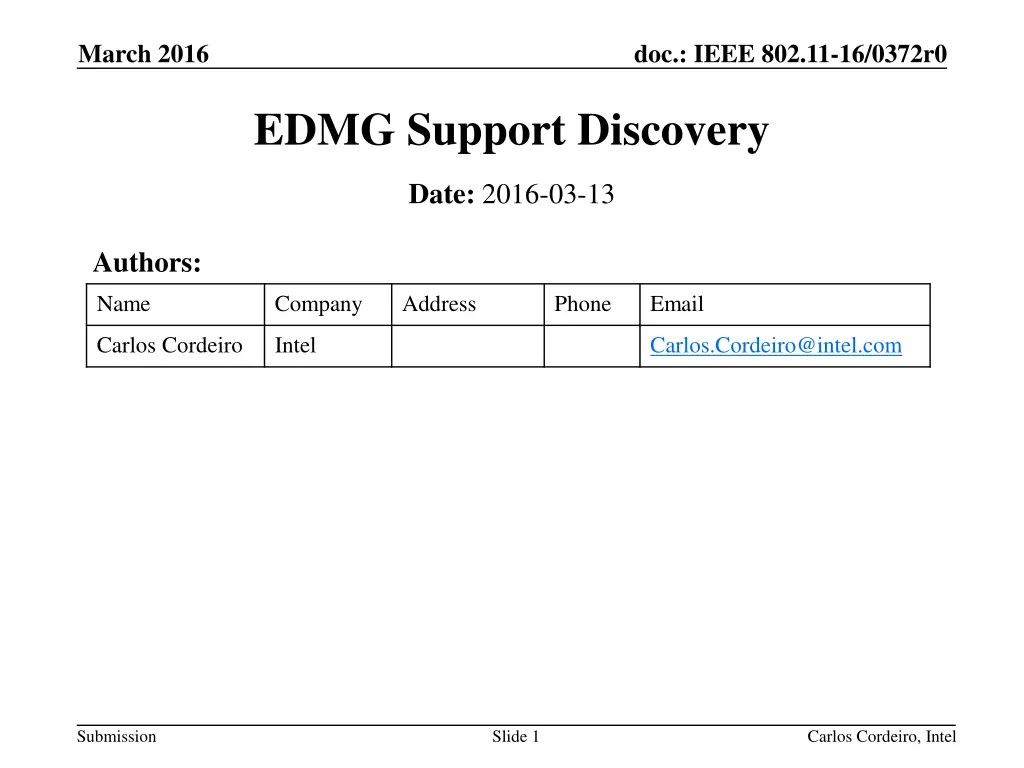
IEEE 802.11-16/0372r0 EDMG Support Discovery
Explore the requirements for backward compatibility between IEEE 802.11ay and 11ad, focusing on DMG Beacon features, beamforming, and options for efficient implementation in EDMG technology to minimize power consumption.
Download Presentation

Please find below an Image/Link to download the presentation.
The content on the website is provided AS IS for your information and personal use only. It may not be sold, licensed, or shared on other websites without obtaining consent from the author. If you encounter any issues during the download, it is possible that the publisher has removed the file from their server.
You are allowed to download the files provided on this website for personal or commercial use, subject to the condition that they are used lawfully. All files are the property of their respective owners.
The content on the website is provided AS IS for your information and personal use only. It may not be sold, licensed, or shared on other websites without obtaining consent from the author.
E N D
Presentation Transcript
March 2016 doc.: IEEE 802.11-16/0372r0 EDMG Support Discovery Date: 2016-03-13 Authors: Name Company Address Phone Email Carlos Cordeiro Intel Carlos.Cordeiro@intel.com Submission Slide 1 Carlos Cordeiro, Intel
March 2016 doc.: IEEE 802.11-16/0372r0 Background 11ay has to be backward compatible with 11ad Therefore, among other things, support of DMG Beacon and DMG initial beamforming are required to support backward compatibility In legacy .11 amendments, backward compatibility and support of next generation are provided through the presence of legacy and new IEs in specific frames HT STA: Supported Rates and BSS Membership Selectors element, and HT Capabilities element in Beacon and Probe frames In 2.4 GHz band, DSSS Parameter Set is also included VHT STA: Supported Rates and BSS Membership Selectors element, HT capabilities element and VHT Capabilities element in Beacon and Probe frames DMG STA: DMG Capabilities element in Probe frames or DMG Beacon in itself In EDMG, the use of this approach would lead to: DMG Capabilities element and EDMG Capabilities element in DMG Beacon and Probe frames Submission 2 Carlos Cordeiro, Intel
March 2016 doc.: IEEE 802.11-16/0372r0 Problem statement In 11ad, we have specifically defined a new DMG Beacon frame so that it can be kept small given that it is: Transmitted with Control PHY Swept across antennas/sectors Many 11ad implementations use the smallest size DMG Beacon It is important that we keep such small sized DMG Beacon in EDMG We could require EDMG STAs to have to BF with the PCP/AP and exchange Probe frames that they can discover (or not) the EDMG Capabilities element However, this is not efficient and will incur higher power consumption on both sides Submission 3 Carlos Cordeiro, Intel
March 2016 doc.: IEEE 802.11-16/0372r0 What options do we have? Option 1: use one reserved bit from DMG Parameters field No additional overhead Option 2: define a new EDMG STA Type element with the smallest possible size Smallest size is 4 octets, with 1 octet Information field Most of the 1 octet could be reserved for future types of STAs after 11ay Option 3: carry full EDMG Capability element in DMG Beacon Typical approach in 11n/ac/ Average size is ~15 bytes Submission 4 Carlos Cordeiro, Intel
March 2016 doc.: IEEE 802.11-16/0372r0 Numerical analysis Compared to option 1 (11ad): Option 2 causes a 6% increase in BTI duration Option 3 causes a 22% increase in BTI duration Submission 5 Carlos Cordeiro, Intel
March 2016 doc.: IEEE 802.11-16/0372r0 Recommendation for PCP/AP We would like to keep the DMG Beacon size (and BTI duration) as small as possible Stick to the same design philosophy from 11ad We do not recommend option 3 Between options 1 and 2: The challenge with option 2 is that it opens the door for the element to grow over time Option 1 is attractive since it carries no additional overhead We recommend option 1 Submission 6 Carlos Cordeiro, Intel
March 2016 doc.: IEEE 802.11-16/0372r0 Conclusions The traditional way (11n/ac/ad) of discovering the type of a STA is not desirable for EDMG and beyond Additional overhead and power consumption Discovering whether a STA is an EDMG STA should be done with the least amount of overhead We recommend using reserved bits for this purpose Submission 7 Carlos Cordeiro, Intel
March 2016 doc.: IEEE 802.11-16/0372r0 Straw polls/motions 1. Include the following in section 3.1 of the SFD: A EDMG Supported field shall be defined by using one reserved bit from the EDMG Parameters field. An EDMG STA shall set the EDMG Supported field to 1." Submission Slide 8 Carlos Cordeiro, Intel

